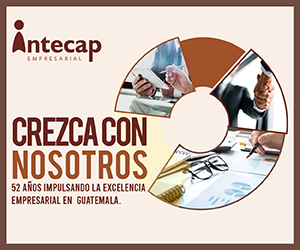Under pressure from the United States to reduce migration, the Mexican government diverted money from a fund intended to spur regional development to instead renovate immigration detention centers and bus migrants away from the U.S.-Mexico border.
According to information obtained by The Associated Press through public records requests, the administration of President Andrés Manuel López Obrador designated more than $4 million from the Mexico Fund last year to immigration containment purposes.
In late May 2019, President Donald Trump threatened devastating tariffs on all Mexican imports unless Mexico acted to contain the flow of migrants crossing its territory. Furious negotiations produced an agreement that averted the crisis. Mexico deployed its newly created National Guard to intercept migrants and agreed to expand a program that allowed the U.S. to make asylum seekers from other countries wait in Mexico while their cases were processed in U.S. courts.
Unnoticed at the time was an adjustment the Mexican government made in June 2019 to its Mexico Fund, which supported development projects in Central America and the Caribbean. In a decree, the government said the fund “required a new vision that allows for better use of resources” and that it could now also be used for the “registration, control and tracking” of immigration flows and equipping detention centers.
Asked about changing the objectives of the fund known officially as the Infrastructure Fund for Mesoamerican and Caribbean Countries and whether it was done under pressure from the U.S. government, the Foreign Affairs Ministry initially provided only a list of improvements made to migrant detention centers. It also said the amount diverted was “very small,” less than 4% of the total fund.
Hours after the story was published Tuesday, however, the ministry said in a letter to AP that “our immigration policy, like our foreign policy, is determined exclusively by the Mexican government … not by the United States nor any other country.”
Tonatiuh Guillén, who resigned as head of Mexico’s immigration agency a week after the agreement with the U.S., said the diversion of the development funds was a “dramatic turnaround” from the fund’s mission and illustrates what happened last year: “a recomposition of the immigration vision completely oriented toward containment that leaves us without tools and resources to design development strategies, which had been the government’s objective.”
President Andrés Manuel López Obrador had campaigned on a different, more humanitarian approach to immigration. Mexico would support countries in Central America’s Northern Triangle that were the principal senders of migrants with the goal of making migration an option, not a necessity. During the first three months of his presidency Mexico issued 15,000 humanitarian visas to Central Americans traveling in caravans.
López Obrador has maintained the same language and launched some development programs in Central America, but government actions changed after Trump’s tariff threat. Guardsmen swept thousands of migrants off Mexican highways. Guillén was replaced by Mexico’s prisons director. Deportations increased. And border cities, already plagued by cartel violence, filled with some 60,000 asylum seekers returned by the U.S. to wait out a process that lasts months and sometimes years.
Many asylum seekers were assaulted, kidnapped and extorted. Some, traveling with children, decided to give up.
The Foreign Affairs ministry provided documents detailing that in July 2019, the Mexican International Cooperation Agency for Development sent some $3.3 million from the fund (at the exchange rate then) to detention centers and in September 2019 more than $700,000 went to transporting asylum seekers south.
The Mexican government has not said how many of those migrants were bused south away from the border, but the Foreign Affairs ministry said months ago that more than half of those waiting had decided voluntarily to return to their countries.
“They’re inviting people to self-deport” without the necessary information and without explaining the repercussions it would have on their asylum cases, said Maureen Meyer, vice president and Mexico director for the advocacy organization Washington Office on Latin America.
“The fact that the Mexican government diverted funding designated to address the economic push factors driving migration to the U.S. in favor of moving asylum-seekers away from Mexico’s northern to southern border, and to improve conditions in Mexico’s detention centers, is a clear sign of how the López Obrador administration has shifted its migration priorities in response to the demands of the Trump administration.”
The program sending asylum seekers back to wait in Mexico stalled this March when the U.S. effectively suspended its asylum process at the southern border due to the COVID-19 pandemic. However, the U.S. government continued sending migrants who had crossed illegally back to Mexico.
In April, the Mexican government tapped the fund again for more than $700,000 for “ground transport, free and voluntary, of people in the national territory,” nearly the same amount as 2019. The AP confirmed at the time that the Mexican government was moving migrants in buses from the northern border south to the border with Guatemala. Many were left there without a way to continue because the pandemic had closed borders.
Since 2011, the Mexico Fund has disbursed nearly $150 million to 11 countries, most of that designated during the two prior administrations for infrastructure projects in Central America.
Last year, López Obrador’s administration also designated more than $62 million from the Mexico Fund for extensions of two social programs to address structural causes of migration in Honduras and El Salvador. It was not clear how much of that money had been disbursed. On Tuesday, the Foreign Affairs Ministry said the two programs had recruited nearly 10,000 participants in Central America.
Asked to comment on use of the fund, Mexico’s Foreign Affairs ministry said that “there’s no money left” and that in May, the government ordered an end to the fund once its commitments are fulfilled, which could take years, as part of López Obrador’s mission to eliminate such pots of money that he sees potential targets of corruption.
Guillén, the former immigration agency director, said, “It is clear the original objective of this fund was distorted and it’s also clear that we don’t have sufficient information about the spending.” (https://www.thetelegraph.com/news/article/Mexico-diverted-money-from-development-to-contain-15549679.php)






































